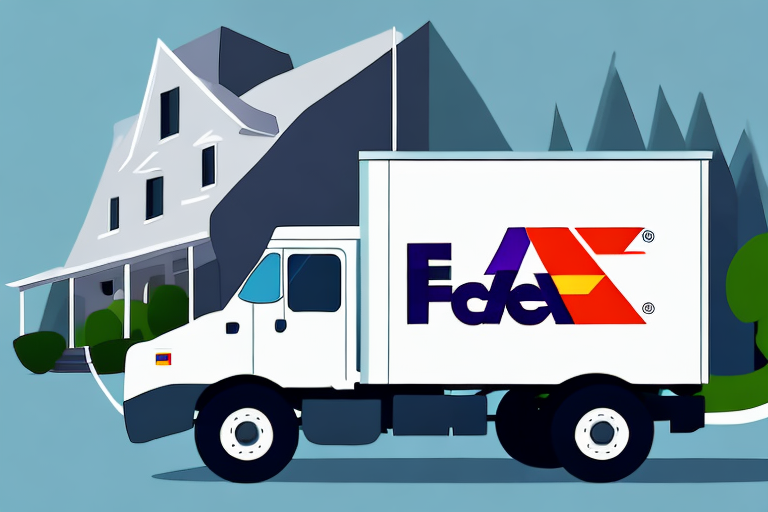Why Your UPS Package Might Not Be Received at the Facility as Scheduled
Understanding the UPS Delivery Process
To grasp why your UPS package might be delayed, it's essential to understand the UPS delivery workflow. When you ship a package through UPS, it undergoes several stages before reaching its destination:
- Pickup from the Sender: The package is collected from the sender's location.
- Transit to a Local UPS Facility: The package is transported to the nearest UPS hub.
- Sorting and Processing: Advanced sorting technologies categorize packages for efficient routing.
- Transit to Destination Area: The package moves closer to the recipient's location.
- Final Delivery: The package is delivered to the recipient's address.
UPS employs cutting-edge tracking technology, allowing customers to monitor their packages in real-time. This system also facilitates rerouting in case of unexpected delays or changes in delivery instructions, enhancing the overall efficiency of the delivery process.
Common Causes of UPS Package Delivery Delays
Several factors can contribute to delays in UPS package deliveries:
- Weather Conditions: Severe weather like hurricanes, snowstorms, or floods can disrupt transit routes.
- Customs Clearance Issues: International shipments may face delays if documentation is incomplete or incorrect.
- Technical Glitches: System outages or equipment failures within the UPS network can hinder processing.
- Incorrect Address Information: Missing or wrong address details can lead to misrouting or return to sender.
- Package Damage: Damaged packages might require additional handling or inspection.
- Recipient Unavailability: If the recipient isn't available to receive the package, delivery attempts may be rescheduled.
For instance, according to the UPS Press Releases, weather-related delays account for a significant portion of delivery disruptions annually.
Tracking Your UPS Package Effectively
Utilizing the UPS tracking tool is crucial for staying updated on your package's status. Here’s how to make the most of it:
- Obtain Your Tracking Number: This number is provided at the time of shipment.
- Visit the UPS Tracking Page: Go to the UPS Tracking page.
- Enter the Tracking Number: Input the number in the 'Track Your Shipment' field.
- Monitor Your Package: View the current status, location, and estimated delivery date.
- Sign Up for Alerts: Choose to receive email or SMS notifications for real-time updates.
However, be aware that system updates might sometimes lag behind the actual package movement. If discrepancies arise, contacting UPS Customer Service is advisable for clarification.
Impact of Weather on UPS Deliveries
Adverse weather conditions can severely impact UPS operations. For example:
- Severe Storms: Can halt transportation temporarily to ensure safety.
- Extreme Temperatures: Affect packages containing perishable or sensitive items, requiring special handling.
According to the National Centers for Environmental Information, extreme weather events have been increasing in frequency, directly influencing delivery schedules. UPS adapts by adjusting routes and employing temperature-controlled transportation when necessary.
Steps to Take When Your UPS Package is Delayed
If you suspect your UPS package is delayed, follow these steps:
- Check Tracking Information: Verify the latest updates on the UPS tracking tool.
- Contact UPS: Reach out to UPS Customer Service for detailed information.
- Utilize UPS My Choice: Sign up for UPS My Choice to manage delivery preferences and receive proactive alerts.
- Verify Address Details: Ensure that all address information provided is accurate and complete.
Implementing these measures can expedite resolution and reduce the frustration associated with delivery delays.
Filing a Claim for a Delayed UPS Package
When delays result in significant inconveniences or losses, filing a claim with UPS might be necessary:
- Gather Required Information: Have your tracking number, shipment details, and proof of value ready.
- Visit the UPS Claims Page: Go to the UPS Claims Center to initiate the process.
- Submit Documentation: Provide all necessary documents, including invoices and any relevant correspondence.
- Follow Up: Stay in contact with UPS for updates on your claim status.
Remember that UPS has specific timeframes for filing claims: up to nine months for domestic shipments and 60 days for international shipments. Missing these deadlines can result in claim denial.
Preventing Future Delivery Delays with UPS
While not all delays are preventable, you can minimize their occurrence by adhering to the following best practices:
- Provide Accurate Address Information: Double-check all recipient details before shipping.
- Use Proper Packaging: Ensure items are securely packed using appropriate materials to prevent damage.
- Leverage UPS Services: Utilize services like UPS My Choice to customize delivery preferences.
- Communicate with Recipients: Confirm availability to receive packages, reducing the chance of missed deliveries.
Implementing these strategies not only enhances the likelihood of timely deliveries but also ensures the safety and integrity of your packages during transit.
Alternative Shipping Options During Peak Seasons
Peak shipping periods, such as holiday seasons, heighten the risk of delivery delays due to increased package volumes. To navigate this, consider alternative shipping options:
- USPS Priority Mail: Offers expedited shipping with tracking and insurance options.
- FedEx Express: Provides reliable express delivery services with comprehensive tracking.
- DHL Express: Specializes in international shipping with robust delivery networks.
Additionally, comparing rates and services across different carriers can help identify the most efficient and cost-effective solution for your shipping needs. Tools like CompareShippingRates.com can assist in making informed decisions based on delivery speed, cost, and reliability.
Conclusion
Experiencing a delay in your UPS package delivery can be stressful, but understanding the delivery process, potential delay factors, and available resources can significantly alleviate concerns. By proactively tracking your shipments, utilizing UPS services, and considering alternative shipping options during high-demand periods, you can enhance the likelihood of timely and secure deliveries. Always ensure accurate address details and proper packaging to further mitigate the risk of delays and ensure your packages reach their intended destinations efficiently.




















